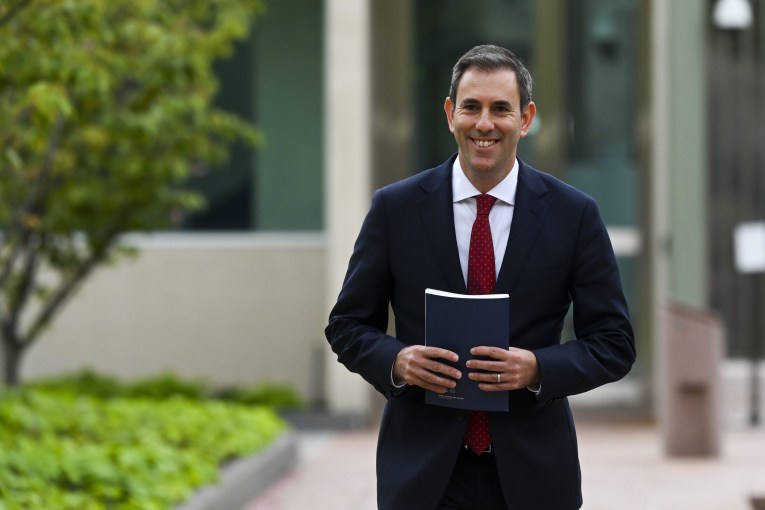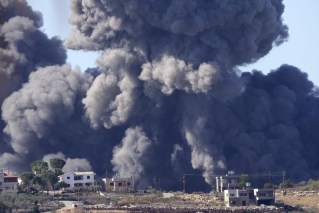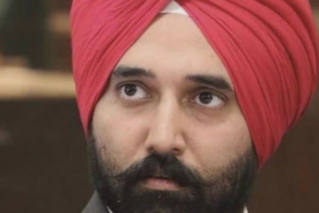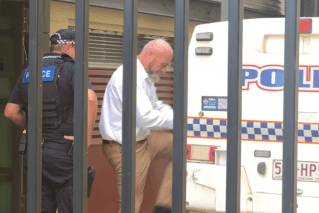How green energy has become ‘the new black’ in booming Qld regions
Mayors of five Queensland regions rich in resources, agriculture and tourism have added green energy projects to the list of economic pillars that will underpin the prosperity of their communities into the future.

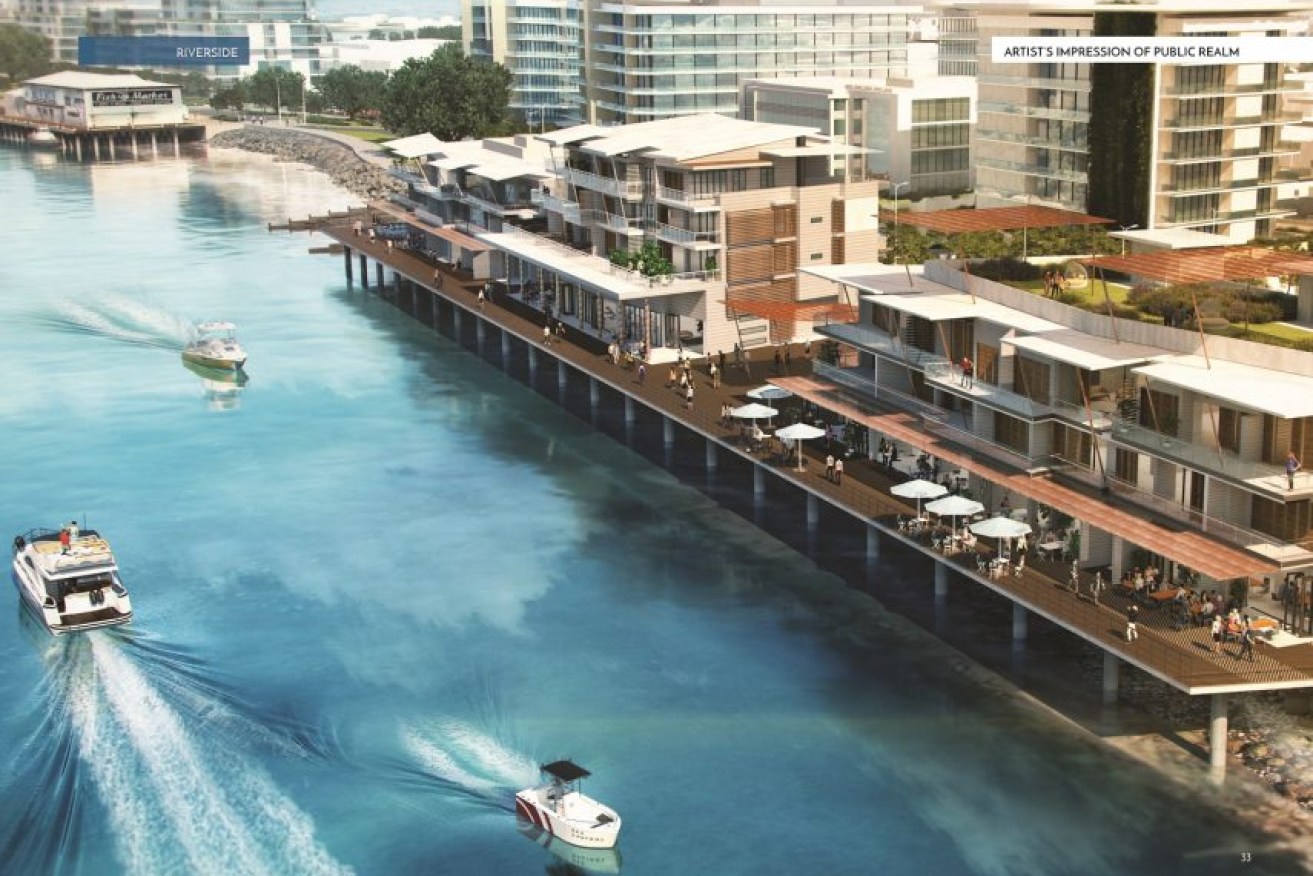
Mackay Regional Council has released a draft master plan setting out a vision for the Mackay Waterfront Priority Development Area and its five precincts.
Guests who heard the regional mayors articulate their visions for the future at a Queensland Futures Institute breakfast in Brisbane, have been told that a jobs bonanza, construction boom and tourism influx is in full stride along the regional coastal strip from Bundaberg to Cairns.
One of the biggest challenges, they agreed, would be finding enough people with the right skills to realise the opportunities and attracting state and federal government interest to build infrastructure for communities that are literally bursting at the seams.
That’s the case in Bundaberg, according to the council’s CEO Steve Johnston, who stood in for mayor Jack Dempsey when his plane was reportedly stranded on the local airport tarmac due to a mechanical fault.
Johnston said the current situation in Bundaberg could only be described as a boom, as capital city dwellers escaped Covid threats and found new approaches to working remotely.
“In February we had more development applications through council than at any other time since we’ve been keeping statistics,” he said.
“The local building industry and the construction supply chain generally is flat out.
“Anecdotally I’m told that once you put your housing plans in it will take another seven to eight months just to get a builder on site.”
Jobs galore
Mackay Mayor Greg Williamson said the same dynamic was unfolding in his central Queensland region, which facilitates a massive percentage of Australia’s coal exports and produces a third of the national sugar cane crop.
“Regional Queensland is a powerhouse for Queensland and the national economy,” he said.
“1.3 million people live north of Bundaberg and produce half the state’s GDP.
“In Mackay, rental vacancy is at 0.5 per cent. You can’t rent a house and we can’t build them fast enough.
“After coming out of the mining downturn of 2015, we’re now back to where we were before that.
“Feed ‘Mackay’ into Seek and you’ll get 1123 jobs. Don’t talk to me about a 5 per cent unemployment rate in Queensland – there are jobs available in Mackay, Rockhampton, Townsville and Bundaberg and Gladstone for people who want them.”
Gladstone Mayor Matt Burnett, who joined the event via video link from his office, had the day before announced a new collaboration involving Japanese multinational Sumitomo to investigate the hydrogen generation and export out of the region.
He is calling Gladstone the ‘hydrogen capital of Australia’, which will put further strain on local infrastructure as the hydrogen ecosystem ramps up to planned final stage export in 2030.
“We have a less than 1 per cent vacancy rate in Gladstone,” he said.
“We can’t build houses fast enough and we have a lot of jobs unfilled here, and with this hydrogen project coming there’s going to be a lot more in the future.”
Defensive position
Townsville Mayor Jenny Hill, who presides over the state’s largest city outside the southeast corner, and home to Australia’s largest army base, said she could also add increased activity in defence to the key drivers that will propel her region forward.
While she’s confident more Australian defence work, such as the maintenance of vehicles and machinery will come to Townsville – taking work away from Brisbane, Sydney and Melbourne, the Singaporean Government is also a big investor, with concrete plans already on the table.
“We are lucky to be in the defence space, she said.
“We have a $500 million investment from the Singaporean Government developing a new training facility at Greenvale, which is in the Charters Towers region, but has Townsville area designated as the preferred area for procurement.”
But Hill explained that her administration was not solely relying on old industries to bring in the revenue.
She said science and technology to harness manufacturing would play a major role in coming years, with talks progressing on three green energy projects for the region – a solar farm to produce hydrogen, clean energy to create a microgrid for a nickel plant and a battery manufacturing plant.
“If the nickel plant gets through the DA it will be the first nickel refinery in the world run completely on green energy,” she said.
“These types of industries represent the future for our region as well as advanced manufacturing.
“There is no doubt the cost of power for manufacturing in north Queensland is very prohibitive, so we needed to find a solution.”
Anne Baker, the mayor of Queensland’s resource-rich Isaac region is adamant that future energy policy shouldn’t come down to a matter of making fashionable choices.
She describes her region as “energetic”, with the community relying heavily on agriculture, but particularly mining, where 51 per cent of Queensland’s saleable coal is unearthed.
“Our mission is to build powerful communities and we have a high proportion of opportunities through various sectors,” she said.
“We’re equally proud of our renewable energy sector. We currently have 11 solar farms and we are about to build the largest wind farm in the southern hemisphere.”
Trouble in paradise
But with growth comes challenges. Mining community Moranbah, which became Australia’s busiest air route from the Brisbane corridor at the height of Covid due to continuing mining activity, is in Baker’s region and is feeling the strain with government services not aligned to its actual population when the additional fly-in-fly-out workforce is taken into account.
Johnston and his mayor Jack Dempsey in Bundaberg also have their eyes on the sky, not for FIFO workers but for how the coming months of autumn rainfall might pan out.
With the state government controversially lowering the Paradise Dam wall over safety issues, capacity has been reduced and summer rainfall hasn’t delivered on what was initially forecast at the outset of the season last year.
“If there is no rain in that catchment by July, Paradise Dam will be empty,” he said.
“That’s going to pose significant problems, particularly for farmers with high-value tree crops. Agricultural land has gone up significantly, about 50 per cent in the last valuation.”
Hill is keeping a very close eye on how Covid containment measures unfold in PNG, which still poses a threat to far north indigenous communities in the Torres Strait and on the mainland in the Cape region.
“We’re still on a precipice with Covid in respect to PNG,’ she said.
“We’re hoping we can come through unscathed.”
Cairns Mayor Bob Manning is sweating on a positive outcome as well.
In his tourist city hit hard by international travel bans, he’s banking on a travel bubble opening up with New Zealand, followed by Japan, South Korea and Singapore, in that order.
“Tourism will continue to carry us forward,” he said.
Charleville for sale
The event in Brisbane on Thursday happened on the same day as the Federal government’s launch of the ‘Move to More’ campaign, initiated by the Regional Institute of Australia.
Murweh Mayor Shaun ‘Zoro’ Radnedge is backing the plan, committing to working with all levels of government to improve existing housing and attract new housing investment into Charleville.
He said that regionalisation is on the rise and people should be looking to Charleville as a serious alternative to their “hectic, stressful city life”.
“Charleville has all the right ingredients for development and I welcome the state government’s recent investment into the towns largest employer, Western Meat Exporters,” he said.
“The state government has backed our town and given the community confidence by investing a $4 million grant into the meat works and now we have even more reason to look at accommodation in our community to compliment this investment.
“We currently have over 60 houses for sale in Charleville. Many of them could do with some love, but I see real opportunity here for young people, retirees or just someone with enthusiasm and DIY skills to really make a house a home.”
